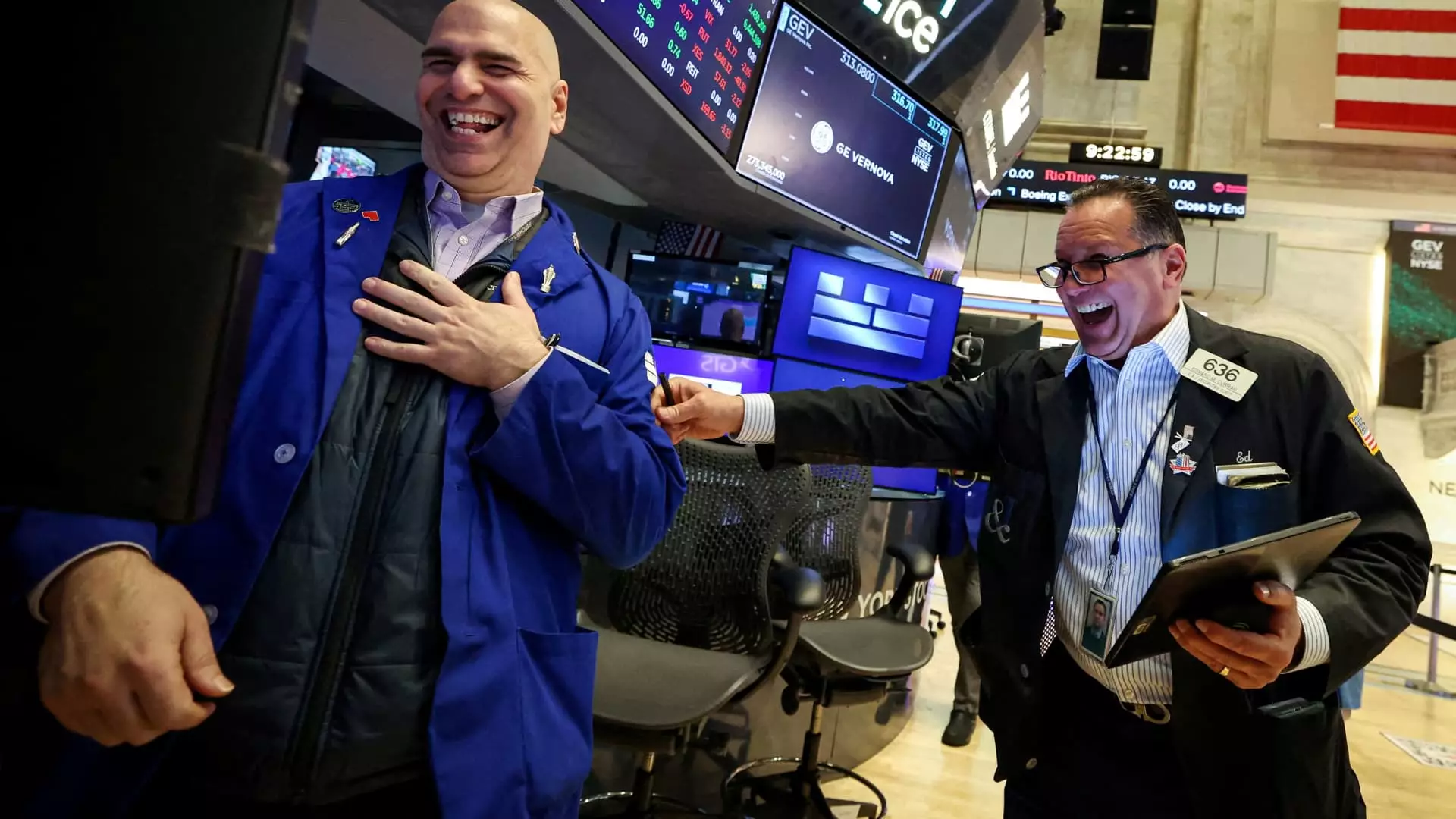The stock market has always been infused with a sense of unpredictability, but the recent dramatic two-day surge has left many analysts scratching their heads. A principal driving force behind this exuberance appears to be the frantic behavior of short sellers scrambling to cover their positions. These short sellers—hedge funds, in particular—amplified their bearish bets in response to recent macroeconomic turbulence instigated by President Trump’s controversial tariff announcements. Goldman Sachs’ recent data indicates that this piling on of short positions inadvertently created fertile ground for a chaotic surge in stock prices, leading to a situation known as a short squeeze.
In essence, short selling operates on the principle that if investors believe a stock’s price is going to drop, they can “borrow” shares to sell at the current higher price, with the intention of repurchasing them at a lower price to pocket the difference. This strategy can be disastrous when market conditions unexpectedly shift, causing prices to rally instead. Short sellers, in their proverbial panic, rush to buy back shares in an effort to mitigate their losses, which can set off a buying spree that propels the stock prices even higher—a fascinating yet perverse reality of market dynamics.
The Artificial Surge: Reality or Rhetoric?
Despite claims of optimism in the market, the surge lacked tangible underpinning, reflecting more of a sentiment-driven rally instead of a fundamental one. Political posturing and rhetoric, particularly insights from Treasury Secretary Scott Bessent on the “possibility” of a significant trade deal between the United States and China, have contributed to a sense of optimism that seems unanchored in reality. With no concrete agreements secured, it’s difficult not to ponder whether the market’s response is unjustifiably enthusiastic, leaning heavily towards wishful thinking rather than analytical reasoning.
Market watchers observed an almost manic rebound, with the Dow Jones Industrial Average purportedly soaring by as much as 1,100 points following previous declines. Yet, as the excitement unfolded, there seemed to be an underlying fragility; the rally quickly lost steam, revealing the elusive nature of market confidence. The initial gains, bolstered by short covering and transient optimism, began to evaporate, dropping back to a more modest increase of around 500 points by midday. This ebb and flow highlights the precarious nature of current investor sentiment, suggesting that many may be riding a wave of nothing more than market speculation.
The Role of Leadership in Market Confidence
Adding to the complex interplay of market dynamics, President Trump’s sudden reversal on his position regarding Federal Reserve Chair Jerome Powell further exacerbated the volatility. After suggesting that Powell’s “termination cannot come fast enough,” the president swiftly retracted his statements, proclaiming he had “no intention” of firing the Fed Chair. Such rapid shifts in tone can wreak havoc on market sentiments, drawing investors into a vortex of uncertainty. It underscores a critical point: leadership plays a pivotal role in shaping market landscapes, and the inconsistent messaging from the Trump administration reflects poorly on investor confidence.
While the short squeeze might paint a momentarily rosy picture, this type of rally is frequently not supported by long-term bullish sentiment. As noted by John Flood of Goldman Sachs, hedge funds participating solely in short covering have yet to transition toward outright purchasing of stocks with conviction. True market strength often hinges upon the willingness of long-term investors to commit capital, an action that remains conspicuously absent amidst the chaos.
The Underlying Vulnerability of Market Structures
The recent developments serve as a stark reminder of the inherent vulnerability in current market structures. With short selling creating a double-edged sword that can be beneficial yet dangerous, the financial landscape illustrates a precarious balance. Traders are essentially caught in a rush of adrenaline exacerbated by macroeconomic factors, making it abundantly clear that investor psychology plays an overwhelming role in shaping market behaviors.
While markets can surge based on short covering, such rallies usually lack substantive commitment. Investors should remain wary of relying solely on transient hype, especially in an environment where political rhetoric can shift like a pendulum. The truth is that unless long-term investing re-emerges as a cornerstone of market activities, we may continue to see opportunistic spikes that eventually fizzle out, revealing the essential fragility of hope in the unpredictable theater of financial markets.

Leave a Reply